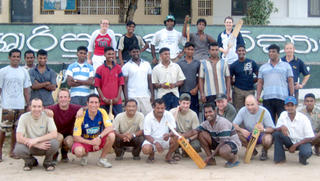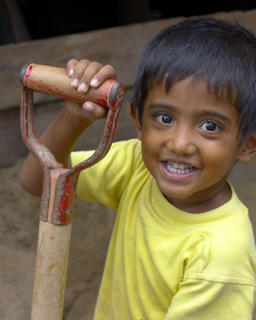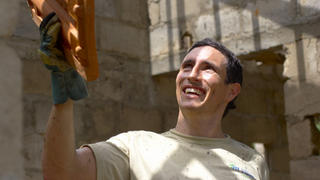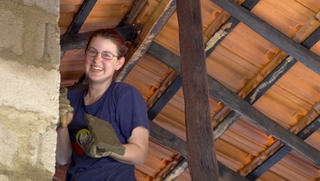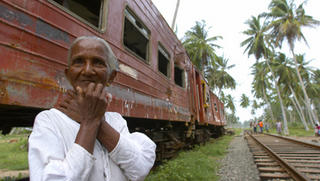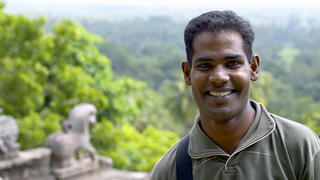Water Water Everywhere
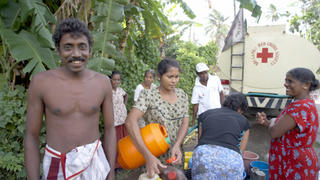
Every few days a Sri Lankan Red Cross truck stops at the main road near the village. Every able bodied person grabs bottles, buckets and plastic cans to fill with water and carry back home. The sight of families running up the street to fetch water impresses upon me the fragile nature of their existence. The village is built along a mangrove swamp which renders the wells salty and undrinkable. The tsunami spread contamination and disease so now they cannot even be used for washing or bathing. If not for the Red Cross service the people here would have no choice but to leave their homes.
Carting water is a difficult business. Most people here live within a mile of the main road, and the distance is multiplied by the number of trips required to carry all the containers. Young boys load their bicycles, pregnant women share a canteen between two, and other women load up wheel barrows with over 40kg of liquid. One family has to traverse the main village and wind through the mangroves with the load. The ground is so soft underfoot that you leave an indentation with every step, a bit like walking in snow. The winding path through the swamp makes it feel even longer – we observe silver sided fish darting through the water, little black crabs watching us cautiously, and mudskippers flinging themselves into the murky still pools.
There is a festive atmosphere around the water truck when it arrives. The driver is a popular figure who enjoys a cup of tea from the appreciative locals. Everyone is patient for their turn - there is never any short supply and they may take as much as they can carry. For now the water is precious yet abundant, so little care is taken to avoid spillage at the bowser.
The minister for the Provincial Council is now working on a proposal to enable a piped water supply to the village. The pipe would have to run about one kilometre to serve the needs of all 16 land titles. The cost however is very high and the water board would seek costs from the community itself, roughly estimated at 80,000rs or $US800. The project would be dependant on external aid if it is ever to happen.
For now the truck will arrive every few days and the people of the village will carry what they can.

